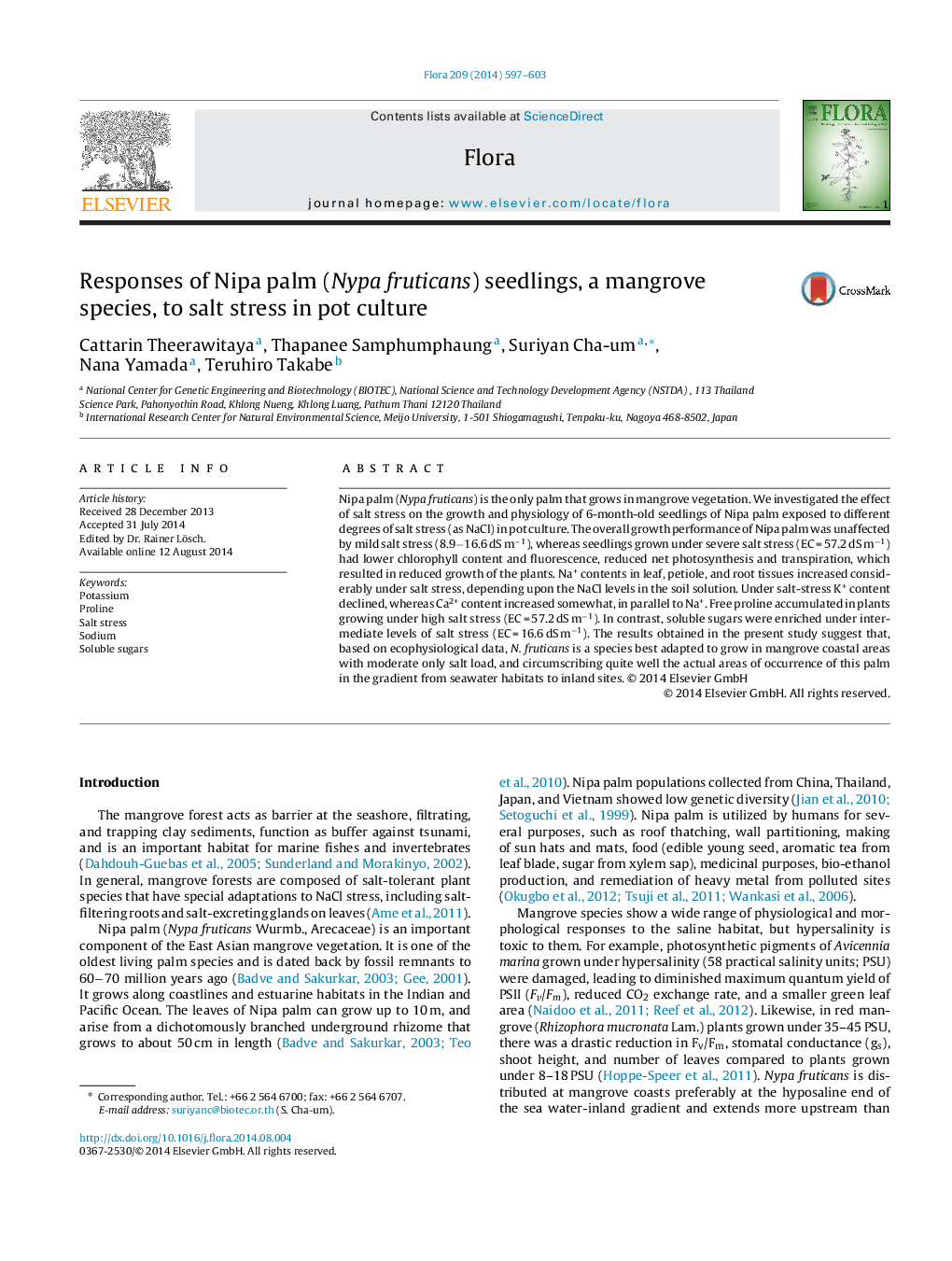| Article ID | Journal | Published Year | Pages | File Type |
|---|---|---|---|---|
| 2179533 | Flora - Morphology, Distribution, Functional Ecology of Plants | 2014 | 7 Pages |
Nipa palm (Nypa fruticans) is the only palm that grows in mangrove vegetation. We investigated the effect of salt stress on the growth and physiology of 6-month-old seedlings of Nipa palm exposed to different degrees of salt stress (as NaCl) in pot culture. The overall growth performance of Nipa palm was unaffected by mild salt stress (8.9−16.6 dS m−1), whereas seedlings grown under severe salt stress (EC = 57.2 dS m−1) had lower chlorophyll content and fluorescence, reduced net photosynthesis and transpiration, which resulted in reduced growth of the plants. Na+ contents in leaf, petiole, and root tissues increased considerably under salt stress, depending upon the NaCl levels in the soil solution. Under salt-stress K+ content declined, whereas Ca2+ content increased somewhat, in parallel to Na+. Free proline accumulated in plants growing under high salt stress (EC = 57.2 dS m−1). In contrast, soluble sugars were enriched under intermediate levels of salt stress (EC = 16.6 dS m−1). The results obtained in the present study suggest that, based on ecophysiological data, N. fruticans is a species best adapted to grow in mangrove coastal areas with moderate only salt load, and circumscribing quite well the actual areas of occurrence of this palm in the gradient from seawater habitats to inland sites. © 2014 Elsevier GmbH
